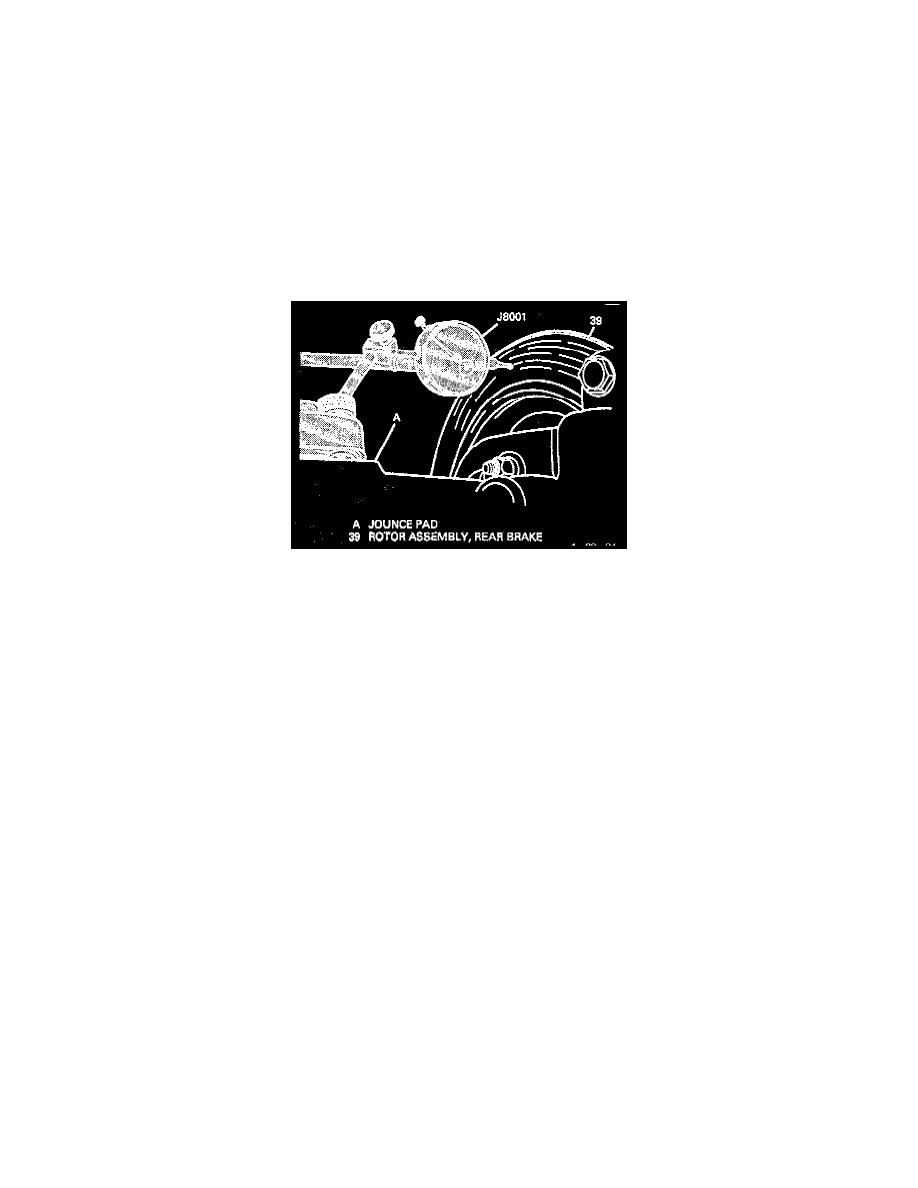S10/T10 P/U 2WD V6-4.3L VIN W (1997)

Brake Rotor/Disc: Testing and Inspection
Rear Disc Brakes
Rear Brake Rotor Tolerance and Surface Finish
In manufacturing the rotor, tolerances of the braking surfaces for flatness, thickness variation; and lateral runout are held very close. The maintenance of
close tolerances on the braking surfaces is necessary to prevent brake roughness. Light scoring of the rotor surfaces not exceeding 1.5 mm (0.06 inch) in
depth, which may result from normal use, will not affect brake operation.
Thickness Variation Check
Thickness variation can be checked by measuring the thickness of the rear brake rotor at four or more points around its circumference. All measurements
must be made at the same distance in from the edge of the rotor. A rotor that varies by more than O.013 mm (0.0005 inch) can cause brake pedal
pulsation and/or rear end vibration during brake applications. A rotor that does not meet these specifications should be refinished to specifications or
replaced.
Checking Lateral Runout
Lateral Runout Check
Tool Required:
^
J 8001 Dial Indicator Set or equivalent
1. Remove tire and wheel.
2. Remove rear brake caliper.
3. Install wheel nuts snugly so rotor is held tight against the rear: axle.
4. Fasten J 8001 to rear brake caliper housing so that indicator button contacts rotor surface about 13 mm (0.5 inch) from rotor edge.
5. Set J 8001 to zero.
^
Push in rear axle while setting J 8001 to eliminate endplay.
6. Turn rotor one complete revolution, and observe Total Indicated Runout (TIR).
^
Push in rear axle while turning rotor assembly to eliminate endplay.
^
Total Indicated Runout (TIR) should not be more than 0.10 mm (0.004 inch).
7. In some cases, excessive lateral runout of rotor on-vehicle condition can be improved by indexing rotor.
^
Move rotor on hub one or two wheel bolt positions from original position.
8. If lateral runout of rotor still exceeds 0.10 mm
^
(0.004 inch), check rear axle shaft flange for excessive lateral runout or looseness.
NOTE: Whenever the rotor has been separated from the axle flange, clean any rust or foreign material from the mating surface of the axle flange
and brake rotor. Failure to do this may result In Increased lateral runout of the rotor and brake pulsation.
a. Remove rear brake rotor.
b. Reposition J 8001 so button contacts surface of axle shaft flange.
c. Push axle shaft flange inward while turning the axle shaft flange one full revolution.
d. Continue pushing in axle shaft flange while setting J 8001 to zero.
e. While maintaining inward pressure, rotate axle shaft flange and note lateral runout.
f.
If axle shaft flange lateral runout exceeds 0.05 mm (0.002 inch), replace rear axle shaft.
9. If axle shaft flange lateral runout is within specifications refinish or replace rotor as necessary.
